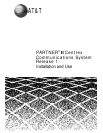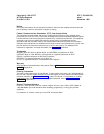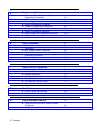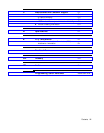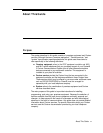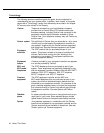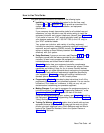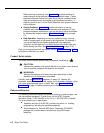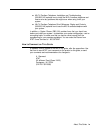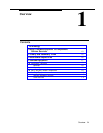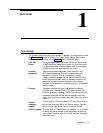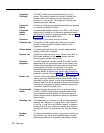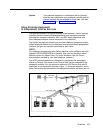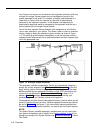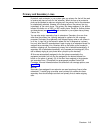
How to Use This Guide
This guide provides instructions and advice on the following topics:
■
■
Installation.
If you are installing the system for the first time, read
Chapters 1 and 2 and Appendix D, which provide an overview of the
system, instructions for equipment installation, and equipment
specifications.
If your company already has modular jacks for all outside lines and
extensions, you may be able to use the existing wiring to install the
equipment controller and connect telephones yourself (see Chapter 2).
If you prefer to have an AT&T service technician install and customize
your premises equipment, call 1 800 247-7000 (in the U.S. only) or
your AT&T authorized dealer.
Your system can include a wide variety of auxiliary equipment,
including fax machines, modems, answering machines, credit card
scanners, and call reporting (SMDR) devices. See Chapter 7 for
advice on setting up these industry-standard devices to work
effectively with your system.
Setup Decisions.
If you are a new user, read Chapters 1, 3, 4, and 6, to
familiarize yourself with the features provided by your equipment
controller, to learn how to program the equipment controller and
individual phones, and to learn how to handle calls.
Chapter 3 explains how your equipment controller complements
Centrex services, providing a variety of features that support Centrex
capabilities and making it easy for you to access Centrex features.
Chapter 4 helps you make decisions about customizing the premises
equipment, to use additional features and capabilities provided by
your equipment. Chapter 6 provides call-handling instructions for
standard phones and for MLS- or MLC-model phones.
Programming.
Chapter 5 gives step-by-step instructions for all of the
programming procedures for your premises equipment. You can use the
information in this chapter as a reference, to help you carry out your
decisions about customizing your premises equipment.
Making Changes.
If you need to reprogram the premises equipment or
individual extensions, see Chapter 5, “Programming Reference,” or the
Programming Quick Reference pages at the back of this book.
If you are adding equipment to your system, see Chapter 2, “Installing
the Equipment,” Chapter 5, “Programming Reference,” and Chapter 7,
“Using Auxiliary Equipment.”
Training Co-Workers.
Chapter 6 explains how to handle calls and use
equipment features effectively. To help users get the most out of their
phones, give each telephone user a Quick Reference card and filled-in
copies of the “Speed Dial Numbers” form in the System Planner or
Appendix A of this book.
■
■
■
About This Guide
vii



